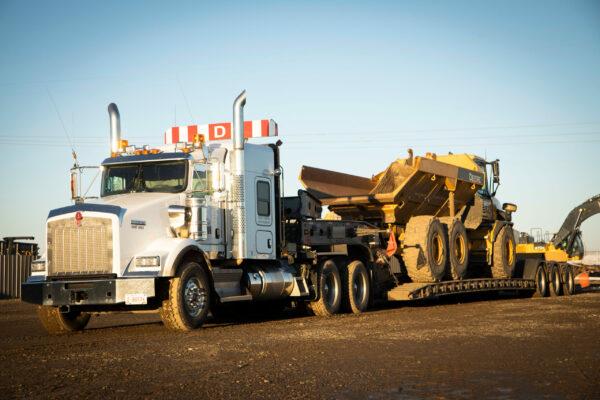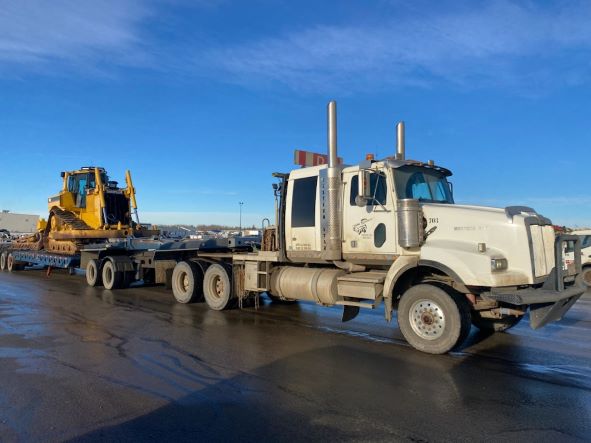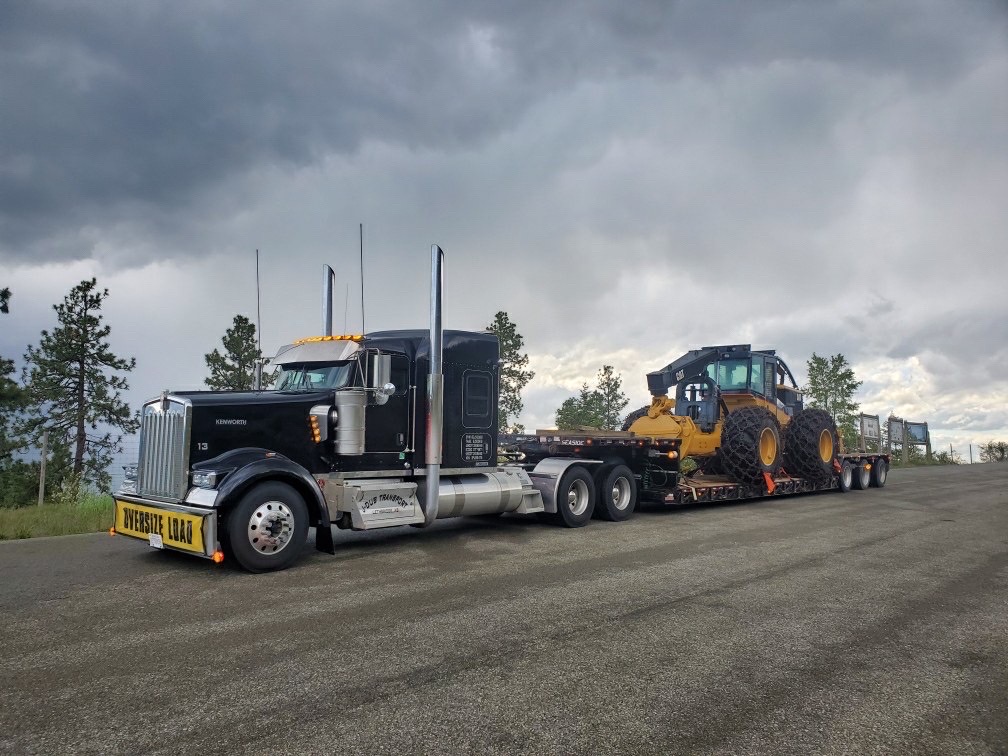How much do you know about the history or contributions of the trucking industry? It’s a vital part of our society, keeping our stores stocked with merchandise, our grocery stores full of food, and our equipment safely moving from place to place. But how often do you stop and wonder how we got to where we are with modern trucking today?
The iHeart Radio podcast Stuff You Should Know (SYSK), hosted by Chuck Bryant and Josh Clark, recently aired an episode covering the history, evolution, and future of American trucking. While they cover a wide range of facts about the trucking industry and are well worth a listen, here are some of the most relevant surprising facts about trucking that you probably didn’t know but now will.
How Much Do Truckers Haul in a Year?
A significant amount of cargo is transported all over North America daily, from merchandise to food to fuel and heavy equipment. Statistics in the United States calculate that 11 billion tonnes of freight is hauled every year by the trucking industry.
According to Stats Canada, 90% of all freight shipments domestically are hauled by truck, with rail shipments accounting for only 9% and air shipments being the remainder. That’s a lot of essential goods moving down our highways daily.
When Was the First Semi-Truck Invented?
The motorized semi-trailer concept has existed since the beginning of the twentieth century, with two separate inventors getting the credit for different designs. In 1898 in Cleveland, Ohio, Alexander Winton—founder of Winton Motor Carriage Company—created a semi-truck and trailer system to deliver his new cars to their owners to avoid putting any mileage on them.
A few years later, in Detroit, Michigan, August “Gus” Freuhauf helped his friend solve the problem of transporting his boat to the lake by connecting an extended custom-made trailer to a modified Ford Model T car. His invention worked, and he continued to modify cars to fit trailers, eventually designing a semi-truck model. August is given credit for coining the term “semi-trailer.”
Why Is it Called a Semi?
When you see a truck going down the highway pulling a trailer with a heavy load, you might not think much about what it’s called or why. Some people think “semi-truck,” while others just say “semi.” If you’ve ever wondered why we say “semi,” this fun fact is for you.
A semi-trailer doesn’t have a front axle. When it attaches to a truck, the truck acts as the fifth axle. Therefore it isn’t a full trailer; it’s only a “semi” trailer. Trucks designed to pull semi-trailers can be called semi-trucks, or just semi, for short.
Who Invented the Reefer Truck?
Can you imagine a time before refrigerated trucks? It was a time when the transport of perishable items stayed relatively close to home. It was also messy, relying on ice to keep the interior of a trailer cool. The distance travelled ended when the ice melted.
In 1939, prolific inventor Fred McKinley Jones created a portable refrigeration system for semi-trailers to stay cool while in transport. The vehicle air conditioning device would be called the Thermo King and it revolutionized the shipping industry, leading to the creation and rise of supermarkets across North America.
His refrigeration design went beyond trucking. Due to demand for what his invention could do, he developed systems for trains and airplanes too. He even modified his device to be small and portable to be used during WWII to parachute coolers of donated blood down to field hospitals. Thanks to this incredible mind, the trucking industry took a great leap forward.
What Happened to All the Weigh Scales?
We discuss the importance of weighing your load a lot on this blog, and that’s because it’s essential to haul the load properly and meet government restrictions. But those restrictions have not always been standardized.
In the United States, prior to 1950, each state had a lot more freedom to establish its own weight restrictions for public roads. This meant that truck drivers were constantly waiting in line at weigh scales off the highway to ensure they met each region’s weight limits. If they didn’t, they had to make adjustments. The industry found this variation between states to be cumbersome, inefficient, and unnecessary.
In the 1950s, the Federal Government imposed a weight limit to standardize the rules across the country. This became more official in 1982 with the introduction of the Surface Transportation Assistance Act. If you remember seeing trucks lined up for weight scales while sitting in the backseat of your family car on road trips, you’re not alone. If you’re wondering what happened to that trend, the standardized rules mean that drivers no longer have to weigh in at every state crossing.
When Were Air Brakes Introduced into Trucks?
The average truck and trailer today range from 48’ to 53’ long, 8.5’ wide, and 13.5’ tall. Without a load, semi-trucks can weigh about 10,000 pounds and upwards of 80,0000 pounds with a load and regular trailer. Such large, heavy vehicles require specialized braking systems.
Air brake systems, which semi-trucks use, were first invented for trains by George Westinghouse in 1872. It wasn’t until his technology was proven effective in trains that the air brake system was adopted by trucks in the 1920s. Once air brakes were introduced, trucks and their trailers got larger and heavier.
Heavy Hauling in Canada and the United States
The trucking industry has come a long way in the past hundred years and continues to be an important lifeline, delivering cargo, freight, supplies, and machinery across the continent. When you need something heavy, large, or oversized shipped, our network of drivers is ready to help. Get started using our free load board today with a free, instant quote.





